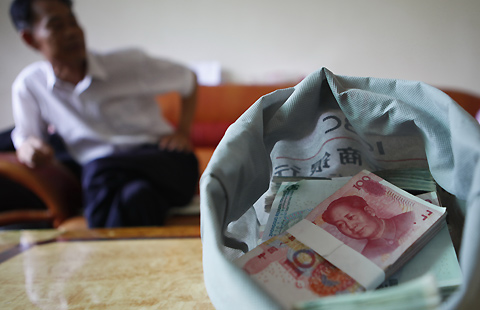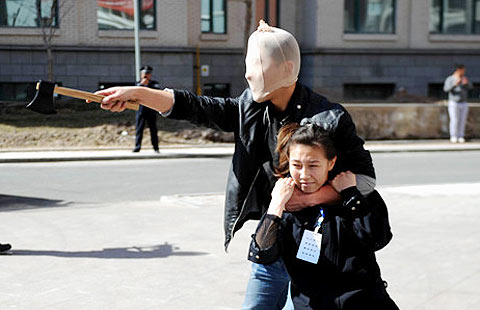

China Daily website is inviting foreigner readers to share your China Story! and here are some points that we hope will help contributors:
I eat my peas with honey
I’ve done it all my life
It makes the peas taste funny
But it keeps them on my knife!
Travelers the world over discover pretty early on how easy it is to offend their national hosts by their ignorance of local customs. A Chinese friend of mine, for instance, explained that at a formal Chinese meal the host should always place himself nearest the door while the 'guest of honor' should sit facing the door with other guests seated away from the honored guest in order of seniority or importance.
 |
| Brian Salter [Photo provided to chinadaily.com.cn] |
For instance, Europeans always hold their fork in the left hand, while Americans shift it between their left and right hands, using it on the left when cutting something and then transferring it to the right hand to bring the food to the mouth.
In Europe, the golden rule is for the tines of the fork always to remain pointing down. And the English take this one stage further in that they never (in formal company at least) turn their forks over to shovel the food up.
This can lead to amusing results when foreigners try to emulate the British and attempt to eat their peas by lifting them up on the backs of their forks. Mind you… watching a European getting to grips with chopsticks can, I suspect, sometimes be as amusing for the Chinese!
When I first came to Beijing, I learned pretty early on that the Chinese like to drink. It doesn’t seem to matter if it's lunch or dinner; as long as a meal is being hosted, there will be alcohol.
Having spent the previous ten years living in the Middle East, where alcohol is either kept at a low profile or prohibited altogether, this came as a pleasant change, though going from almost zero alcohol to being offered drinks with an alcoholic concentration as high as 60 percent came as a bit of a shock.
My guide book summed it up perfectly: "Chinese wine is more like rocket fuel than liquor. No matter how good a drinker you may think you are, never, ever challenge a Chinese into a drinking contest. They will win, hands down!"
Toasting is, of course, an important part of Chinese business etiquette and appears to carry on throughout the meal. In Britain, on the other hand, some of the stronger drinks are kept until the end of the meal. In fact, some 150 years ago, diners would wait until the end of the meal, before the ladies would retire and then the men would get down to the serious drinking.
In formal dinners, some of the old customs still remain. For instance, vintage port – a fortified wine – is always decanted into a flask and then passed around the table in a clockwise direction. Ideally, the decanter should never stop its clockwise progress around the table until it is finished. If the decanter should ever stall it is considered very bad form to ask for it. Instead, you ask the person hogging the decanter: "Do you know the Bishop of Norwich?".
If they are au fait with port etiquette they will immediately realise their faux pas and pass along the decanter with an apology. If not, and they answer in the negative, you should say: "He's a terribly good chap, but he always forgets to pass the port." It is unclear which forgetful and inebriated Bishop of Norwich is responsible for inspiring this particularly part of the etiquette!
The reason for keeping the decanter moving until it is finished is because the best vintage ports, despite benefiting from an airing for a few hours to let them "breathe" before drinking, rarely last more than 24-hours. The oldest vintages start to deteriorate if they come into contact with too much oxygen.
Another popular way of serving port is to hollow out a large desert spoonful from a complete stilton cheese and to fill the resulting hole with fresh port. Stilton and port go so well together that the shelves of supermarkets in the UK right now are filled with Christmas gift packs of this after dinner ensemble, while first class service on British airlines invariably has a port-and-stilton combo on offer.
The author is a broadcaster and journalist who spent 10 years working in Saudi Arabia and Dubai before moving to Beijing in 2011.
The opinions expressed do not represent the views of the China Daily website.
[Please click here to read more My China stories. You are welcome to share your China stories with China Daily website readers. The authors will be paid 200 yuan ($30). Please send your story to mychinastory@chinadaily.com.cn.]








